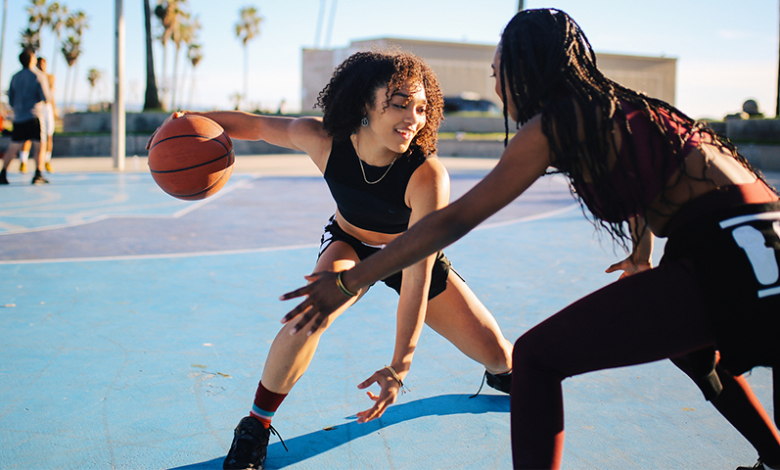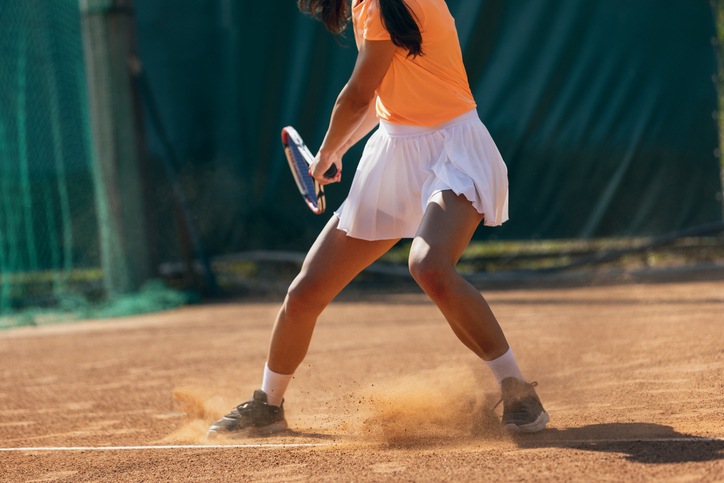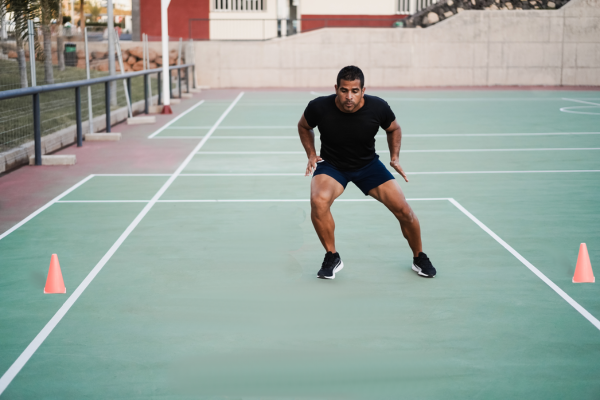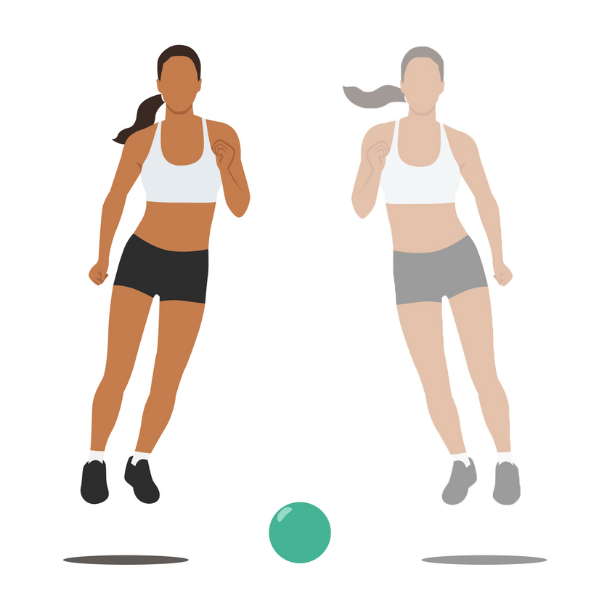Go Sideline-to-Sideline in Less Time by Improving Lateral Quickness

“Lateral quickness” sounds like a skill that’s exclusive to professional athletes. After all, most of us mere mortals are just trying to balance a healthy mix of cardio, strength training, and mobility work. Who has the time for specialized training?
But, athlete or not, lateral quickness is relevant to your ability to move efficiently, and it’s not all that difficult or time-consuming to incorporate lateral quickness exercises into your current routine.
Plus, isn’t it kind of fun to work out like a pro?
What Is Lateral Quickness?
Lateral quickness is the ability to move your body from side to side quickly. It’s less about speed — accelerating in one direction — and more about being able to move left to right and rapidly change directions while maintaining balance and control of your body.
Why Is Lateral Quickness Important?

It improves sports performance
Depending on the sport, lateral quickness can mean the difference between a win or a loss.
“Many sports require athletes to change direction quickly in a side-to-side manner. This could be a shortstop fielding a ground ball hit up the middle, a running back avoiding a linebacker who is trying to make a tackle, or a tennis player moving to the opposite sideline to return a shot,” explains Dr. Jordan Duncan, DC, owner of Silverdale Sport & Spine in Silverdale, Washington.
It’s an often-neglected movement pattern
Beyond the court or playing field, lateral quickness can also have an impact on how you move in your everyday life.
“You don’t have to play a sport. Avoiding someone on a sidewalk, navigating a busy concourse at the airport — we need to be able to have that ability to step to the side to get out of the way,” says Pete McCall, C.S.C.S., master trainer and host of the All About Fitness podcast.
Yet, side-to-side movement is often absent from a typical fitness routine. Common physical activities like running, cycling, rowing, and even biceps curls all occur along the sagittal plane (moving the body in a forward and backward motion). This training deficit can make us vulnerable, explains Duncan.
“We are often injured in areas where we lack strength, coordination, and mobility,” he says. “Many of us are able to walk and run pretty well but struggle when moving side-to-side. Training with movements in the lateral plane, even progressing to quick movements, can be beneficial for muscle and joint health, as well as overall conditioning.”
5 Exercises to Improve Lateral Quickness
To improve lateral quickness, you must train in a side-to-side movement pattern. Both Duncan and McCall recommend a combination of speed drills and plyometric training.
“By doing this, you will strengthen type II (fast-twitch) muscle fibers and enhance the efficiency of the nervous system,” Duncan says. “This will lead to better speed and force of lower extremity muscle contraction, resulting in improved lateral quickness.”
Lateral quickness isn’t the only benefit to doing these movements. Incorporating speed drills into your routine is an excellent way to shake up your cardio workouts, and exercises like skater jumps and banded lateral walks will strengthen the muscles of the glutes, hips, and legs.
1. Lateral shuffle

- Set up a pair of cones 5 to 10 yards apart. Alternatively, pick fixed markers, like telephone poles or lamp posts.
- Stand inside the left cone with your feet hip-width apart, your elbows bent, and hands in front of your chest.
- Keeping your back flat and abs engaged, bend your knees, push your hips back, and lower your body into a quarter-squat.
- Keeping your chest lifted, quickly step your right foot to the right, push off with the left foot, and then return to your original stance (feet hip-width apart). Repeat the movement, shuffling to the right until you reach the other cone.
- Immediately reverse the movement and shuffle back to the first cone.
2. Lateral band walk
- Loop a small resistance band around your legs just above your ankles or knees and stand with your feet about shoulder-width apart, creating tension on the band.
- Keeping your back flat and abs engaged, bend your knees, push your hips back, and lower your body into a quarter-squat, shifting your weight toward your heels.
- Maintain the squat and tension on the band as you step your right foot to the right, followed by the left foot.
- Continue to sidestep to the right for the specified number of steps, then reverse the movement and return to the starting position.
3. Side jump over mini hurdle

- With your feet together, stand next to a mini hurdle or an object of similar size.
- Jump sideways over the hurdle, then immediately jump back to the starting position.
- Continue to jump back and forth over the hurdle, spending as little time on the ground as possible.
4. Skater jump
- From a standing position, shift your weight onto your left leg, bending your left knee to lower your hips a few inches while raising your right foot off the ground.
- Bound to your right by pushing off with your left leg.
- Land softly on your right leg, allowing your left leg to cross behind you and your arms to swing across your body in the same direction.
- Pause, and then repeat the movement, this time pushing off with your right leg and landing on your left leg.
- Continue jumping back and forth.
5. Jumping rope, skier variation
- Hold the rope with your elbows bent, palms facing up, and wrists roughly at waist height. Your wrists should be a few inches away from the sides of your body.
- Start with the rope behind your heels, and spin the rope up and over your head. (Once you’ve built up momentum, you should be able to continue spinning the rope by moving your wrists with minimal elbow and shoulder movement.)
- Keep a slight bend in your knees, stay on your toes, and jump a couple of inches off the ground and to the right. On the next swing, jump to the left. Continue alternating sides with each jump.



